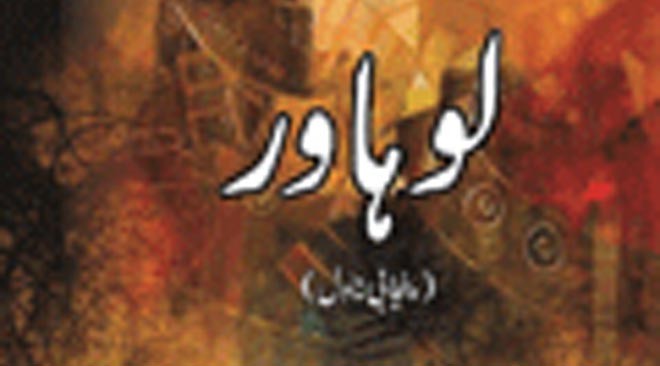
A Punjabi novel portraying the multi-layered history of Lahore and the development projects that continue to wreak havoc with its heritage

The author gives the reader a list of names by which our beloved city of Lahore has been referred to in times passed by, by travellers, poets and saints, kings and warriors, and settles on one of them as the title of his somewhat post-modern novel: Lohawar. By choosing that as a title, he turns lament into a tribute and vice versa.
The novel begins with references to Lahore’s existence in medieval and colonial literature and to the narrator’s friend Najeeb, ‘of exalted station, of noble orientation’, who has entered into a state of emotional coma, probably voluntarily. Najeeb seems like a subconscious protest, symbolising the eminent writers whom the author quotes to shore up his case in favour of Lahore having been a great city once. The author even shares a royal decree by none other than Akbar the Great, who once stated that Lahore’s land and its monuments belong to the inhabitants of Lahore. All rulers believe their words would always remain the law.
The novel loosely has three sections. The first and third belong to the narrator, his personal struggles, family, and love interest. The middle section, which is bigger than the other two sections put together, belongs to Najeeb. It begins as the narrator enters his friend’s room. There he detects what he calls "order in chaos" which becomes the heart and body of the novel. The room is littered with books, articles, pictures, cuttings, Najeeb’s diary, interviews of other people, all contributing to a dismal, depressing, deteriorating picture of a great city.
The middle section takes up almost ninety percent of the novel and is full of extracts, clippings and digressions, some interesting characters and others less so, such as Chacha Quba and Satwant Kaur and later on Dr Ajaz Anwar or Kausar. While it somewhat succeeds in painting a panoramic portrait of a city in pain, it decimates the narrative and freezes the frame. But there are things about this slim novel that keep it alive, above water, as well as the reader’s interest in its narrative arc. Perhaps that is Ejaz’s main gift as a writer of prose.
One such thing is the narrator’s love interest Safina and her mother’s complex and compromised autonomy, her husband being in the army and away most of the time on military operations (we never learn of his rank though it seems like he’s not a commissioned officer for that could risk the novel being banned). While the mother defies patriarchal rules and norms, Safina teaches the narrator a bit about courage with regards to things one loves, in contrast to slipping into a self-inflicted wound/vow of silence.
The other element that piques the reader’s interest, even if the narrative often slips into non-narrative, is Chacha Quba’s character who acts as the second self of Najeeb, especially when he blurts out, "eh kitthon da insaaf aey?" The entire novel seems to balance itself on this minute but crucial point: the absence of justice in Pakistan for the vulnerable ones. The novel seems to hint at an invisible scream -- Edvard Munch’s expressionist painting ‘Scream’ hovers at the back of the reader’s mind.
This brings us to the central thorn of the novel: the construction of the Orange Line Metro Train in Lahore whose construction is having a two-fold effect on Lahore and Lahoris.
On one hand, the narrator, his romantic interest Safina, and others are direct victims of Metro Train project as their houses are being demolished, and on the other, the project is being carried out at the cost of endangering archaeological and historical landmarks such as Shalimar Garden and Chauburji. The author succeeds in gathering the readers’ sympathy but at the cost of turning his fiction didactic and bereft of character development. A point can be made, however, that the real character of the novel is actually the city of Lahore.
The most creative or artistic part of the novel appears on page 38 as a diary entry, where Najeeb describes the instance where he sees the city crying aloud while it is being dug up and ripped apart, and compares it to a patient who is stricken with tuberculosis. I had to read the whole section at least three times to make sure Najeeb is wading into the city’s emotions, and not a person’s whose name I might have missed. It is at this point the city turns into an allegory for the suffering of its ordinary citizens. But for the novel to rise above its own ordinariness, despite its courageous attempt at post-modernity, it needed more meat, more psychological and intellectual depth.
Post-modern novels, the ones with a fractured narrative or non-narrative or multi-narrative are harder to write. Yet I am hearted to have read Lohawar for it points towards a surging self-confidence among the new generation of Punjabi writers as they tackle new techniques and subject matters. I still hope that the younger generations in Punjab take up the habit of reading modern fiction written in Punjabi. No literature can truly flourish without a solid and committed readership. The fact that Punjabi prose writers keep producing novels and short story collections despite their minuscule readership is highly commendable.
Lohawar
Author: Ejaz
Publisher: Fiction House
Pages: 110
Price: Rs200